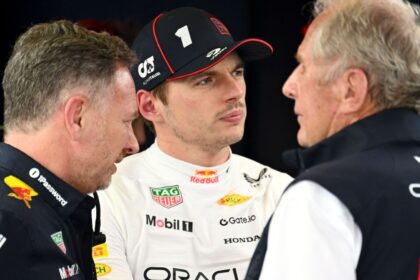Lewis Hamilton and the Crisis at Ferrari: The End of an Era?
Lewis Hamilton’s arrival at Ferrari generated unprecedented anticipation. The presentation of the seven-time Formula 1 world champion, along with his new teammate Charles Leclerc and team principal Frédéric Vasseur, at the O2 Arena in London, promised the beginning of a new era. However, the initial euphoria has given way to uncertainty and disappointment. In February, the atmosphere at Ferrari was vibrant. Hamilton, excited about his move from Mercedes, was joining the most iconic team in F1, seeking to break a title drought that had been going on since 2008. Both he and Leclerc, after testing the new car at Fiorano, were optimistic. The chemistry between both drivers, even playing chess online, seemed perfect. But the current reality sharply contrasts with that initial optimism. Hamilton’s promise, which seemed to be the missing ingredient for Ferrari, has quickly faded. McLaren, which last year was close to surpassing Ferrari in the constructors’ championship, has proven to be superior. A victory in the China sprint race and some podiums for Leclerc are the only outstanding achievements of the Italian team so far in 2025, before the summer break. The most worrying thing is that Hamilton’s motivation has given way to frustration and defeat. After 14 races, it seems that the Italian team has managed to undermine the morale of the one considered the best driver of all time. In Budapest, his comments, where he described himself as “absolutely useless”, could define the memory of this costly transition.On Saturday, after being eliminated in Q1, Hamilton suggested that Ferrari “probably needs to change drivers.” These words, spoken by a driver with a £60 million a year contract and a record of poles and victories, are surprising. Ferrari’s president, John Elkann, who invested heavily in his signing, is surely questioning this defeatist attitude.
After finishing in 12th place, Hamilton looked somber, mentioning “many things happening in the background… that are not good.” Regarding the Dutch Grand Prix, after the August break, he commented: “I hope to be back, yes.” Ferrari’s home race, the Italian Grand Prix in Monza, which is a pilgrimage for its fans, will be held a week later. It’s amazing how things have changed in such a short time. Although Hamilton insists that his focus is on adapting to the 2026 regulation changes, which Ferrari hopes will propel him to the top, neither his words nor his driving suggest that he is prepared for that challenge. The situation wasn’t much better for Leclerc in Hungary. Despite an impressive pole position, his race unfolded in a painfully familiar way for Ferrari fans. Victory seemed possible until, suddenly, it vanished. Leclerc, on the radio, expressed his frustration: “We’re going to lose this race because of these things. We’re losing a lot of time… It’s incredibly frustrating.” Leclerc, finally, backtracked on his criticisms in subsequent interviews, attributing the problems to a chassis failure and not to the changes in configuration. However, this routine of criticizing and retracting is exhausting and reinforces the feeling that Ferrari has a talented driver who expresses his frustrations inside the cockpit, but not so much once he gets out of the car. But Ferrari can console itself with Leclerc’s ability to make something out of nothing. The same cannot be said of Hamilton. The Hungarian Grand Prix was a weekend without positive aspects for the driver of number 44. Is Hamilton finished? His comments were alarming. They seemed to be spoken by someone who is considering giving up. In an interview, he struggled to speak without breaking down.










